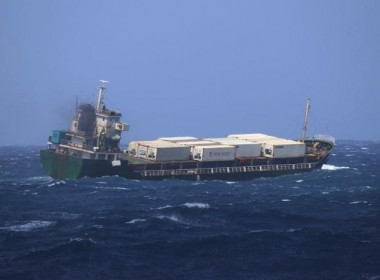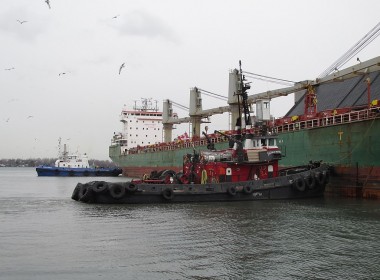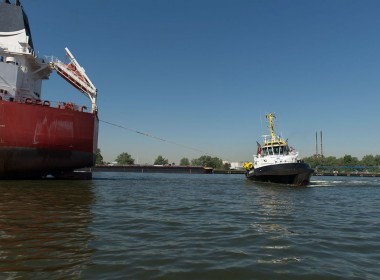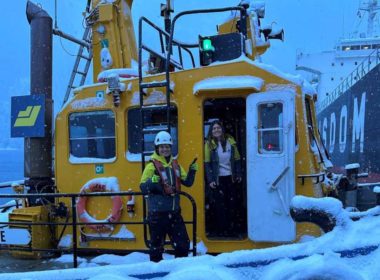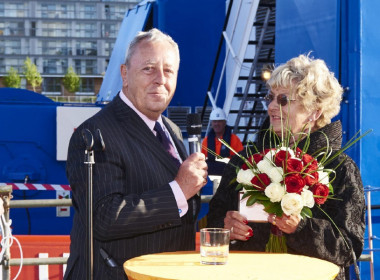COLUMN | Communication as a safety tool [Tug Times]

In my last column I criticised the manning of a tug – not because the crew were female, but because there were only two of them.
My friend Ron Burchett kindly responded and pointed out that the tugs involved in the job I was describing always travel in pairs for mutual support.
This no doubt reduces the risk, but I do not think it eliminates the danger and I would be much happier if each tug had an additional crew member, preferably an engineer.
Nevertheless, we communicated and I now have a better grasp of why the decision was taken, but it set me thinking that perhaps safety, like beauty, is in the eye of the beholder. Obviously, the Canadian crews are happy with the arrangement, and the administration must have approved it, so am I wrong to think it unsafe?
We will never achieve perfect safety, so how much risk is acceptable? How do you even define risk that is “as low as reasonably possible” when professionals who care about safety cannot agree?
“It would have been better if the pilots and tugs had communicated, discussed their respective problems, and sought a reasonable compromise solution.”
One way of finding a compromise is by encouraging all the concerned parties to communicate and discuss their points of view. Perhaps I can demonstrate by referring to a recent NTSB report that features our old friend the Corpus Christi Ship Channel, and an accident that happened in almost the same place as another accident we discussed in a recent column.
This time, the case involves a large tanker in ballast that was coming in to load crude oil assisted by three pilots and five tugs. The modern, reliable ASD tug Mark E. Kuebler was instructed to make fast on the tanker’s starboard quarter and the mate decided to approach stern-first since it would put him in a better position closer to the parallel mid-body and away from the tanker’s narrow aft section and propeller.
The tug needed almost all its power to catch the tanker, which was proceeding at 9.6 knots, so there was very little in reserve for manoeuvring. Thus, when interaction started to suck the tug in towards the propeller, the mate was unable to escape and instead hit the stern of the tanker.
The tug’s mast was badly damaged but, more seriously, the tanker’s propeller sliced into the tug’s Z-peller compartment and water poured in. The crew were forced to beach the tug to prevent it sinking.
According to the NTSB, the damage to the tug cost US$3 million to repair, and the salvage added another US$1 million, whilst the damage to the tanker amounted to US$3.9 million – quite an expensive accident.
In accordance with an NTSB recommendation, the tug company has now instituted a policy restricting stern-first landings to speeds of seven knots or less. I hope they did it in consultation with the local pilots, because the Corpus Christi Ship Channel looks quite tricky to me. It is long and straight, and horribly narrow, so crosswinds or currents must create problems for the pilots, and you can understand why they would want to transit as quickly as possible.
But we have recently learned of two cases where high ship speed has contributed to an accident – once with a bow tug and now with a stern tug. In addition, the NTSB refers to other similar cases in the past. So I suggest this makes my point that it would have been better if the pilots and tugs had communicated, discussed their respective problems, and sought a reasonable compromise solution.
“Perhaps the saddest thing about the CHIRP Maritime reports is that there are hardly any from the tug or offshore sectors.”
CHIRP Maritime recently published its annual digest of all the accident and near-miss reports they received in 2023, and it is available for download from its website. For each report, CHIRP Maritime analyses the human factors that contributed, and probably the most common finding is that communication failures were a strong contributor to the incident. We need to communicate better.
Perhaps the saddest thing about the CHIRP Maritime reports is that there are hardly any from the tug or offshore sectors. Other parts of the industry have embraced the idea that there is value in learning from the mistakes of others, to the extent that CHIRP Maritime can now publish separate safety bulletins for the superyacht and fishing sectors, yet there is hardly anything from the the world of tugs.
You only have to glance at the websites of the NTSB or MAIB, for example, to discover there are plenty of tug accidents, but we are not publicising them for others to learn the lessons. Please think about it, and if possible start sending in reports. They are all rendered anonymous, so reporters cannot be identified, but by communicating, you can make a real contribution to safety.
Such reports will not help us to decide whether a two-person crew is safe, or how much safer the voyages would be with additional manpower, but they will get people thinking. That, surely, is an outcome we can all celebrate.


